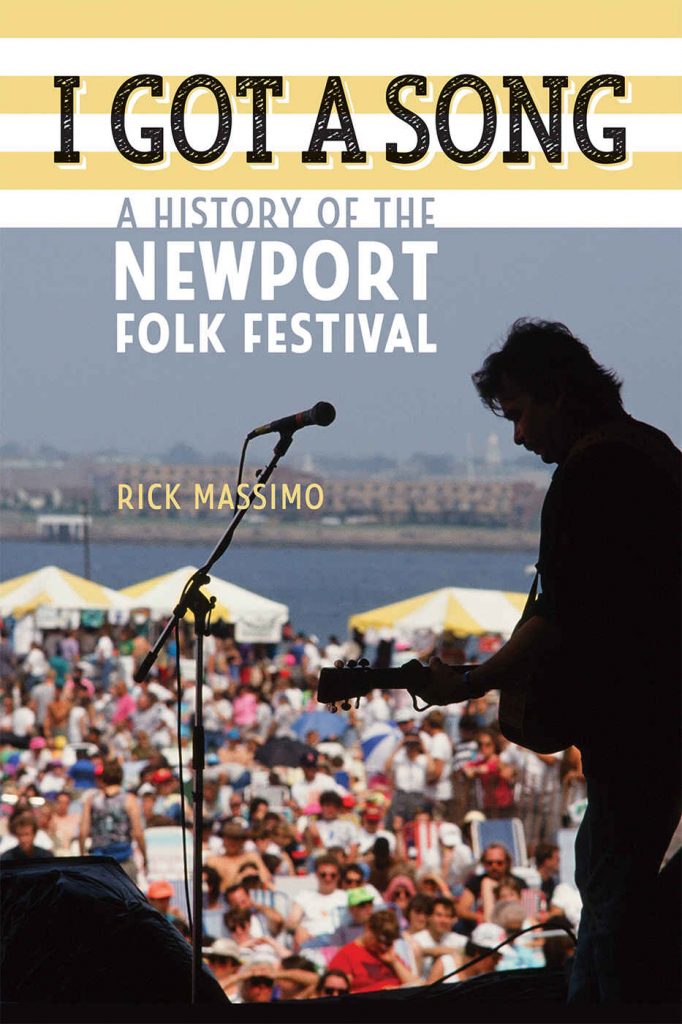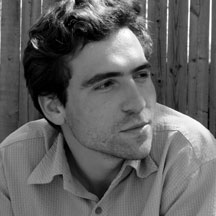
“I Got A Song: A History of the Newport Folk Festival” by Rick Massimo
Wesleyan Press
– out tomorrow
4.5 / 5
We are a hard sell on reads, especially nonfiction. We are incredible biased. And we feel that Rick Massimo, formerly of Providence Journal fame, is one of perhaps two reporters we could imagine who’d put together such a fine history of our favorite festival. (The other being the oft-quoted Jim Gillis in this book, retired from The Newport Daily News.)
This history is coming out tomorrow. It is as exhaustive as it gets: several sources, dozens of interviews, archival reviews, et cetera et cetera, seemingly ad nauseum. And while we are certain there are a handful of musical historians who would jump at the opportunity for this first history of the Newport Folk Festival, Massimo has, most importantly, access: he has already interviewed, spoken to, or hobnobbed with most of the key players in the festival, from founder George Wein, to current Executive Producer Jay Sweet, even before the notion of the book came to his door. Having covered the festival for the ProJo for nine years doesn’t hurt with that, but we must say this: for all the research, for all the access to interview subjects, for all the luck and lining up of the stars, Massimo did his work. He pulled his cart, here.
We are a hard sell on fiction, and harder on nonfiction. And, in fact, such a hard sell that we’d been holding onto this book for almost three weeks before finally cracking it open. And then: three days, the 200-page history was over (“Too fast, much too fast,” our lament). We are also biased, with Newport being our favorite festival, and the perpetually straw-hatted Massimo a congenial fixture there. So, to begin, we have to take into account our biases here in our offering of 4.5 / 5 raves. That said, we’ll try to convince y’all that these aren’t the fancies of a raving overindulged fan.
This book is dense. Especially in the beginning. First warning. That there’s a plethora of names and people may turn off the casual music listener from this kind of read, and push this kind of text squarely into the hands of a music history buff or a die-hard music fan. That said… the history here, especially in the festival’s inception, is sheer fan-boy / fan-girl delight. Joan Baez’s discovery at Newport in 1959; Newport’s, and the country’s, acceptance of Cajun Zydeco music as an art form; the anticipation of Woodstock, the violence in the late 60s; Dylan’s electric “betrayal” in 1965; there are several watershed moments that have crafted folk, that have changed popular music’s trajectory, all because of the Newport Folk Festival. Coming in, we were only aware of a handful of these, but reading Massimo’s history feels to us as if we are sitting at the campfire, recounting the stories from the good ole days.
So yes: are favorite parts are toward the beginning of this book. We admit more than a little jealousy at Ralph Rinzler’s and Bob Jones’ traveling the country for authentic acts to bring to Newport. One such attempt involved picking up a hitchhiker to bring him to a gig in western Florida. Jones and Rinzler there found an incredible talent on the harmonica, and while they were listening, a scuffled ensued. Involving, of course, their hitchhiker; the three were ejected, and next day the harmonica player – along with the bar, the stage, even – disappeared into the Florida backwoods, never to be found. This chapter, with stories of Jones’ and Rinzler’s successes (and failures) for the earliest ten years of the Folk Festival, is a pastiche of stories on racism; imprisonment; the lost (and sometimes found) blues and folk masters; and is pure distilled delight. If we could, we’d hear these envious stories all day – and night – long.
Massimo, in Newport territory, must also deal with Dylan’s “plugging in.” One of the most famous moments for folk, that is, for traditional, acoustic folk with twanginess, and for what we’ll call “new folk,” for the younger generation, came right at Newport’s doorstep in the 1965 festival: Bob Dylan playing his new songs on an electric guitar. Massimo takes a novel approach to this: recognizing the deep divide, and the impossibility of coming to a clear conclusion, he “replays” Dylan’s performance in a series of quotes from those present on that night, all to the tunes that Dylan performed. Seeger, of course, plays a key part in the mythos, and we’ll save some of those quotes for those who want a good old-fashioned smile. But perhaps our second favorite quote from that night comes from Dylan recalling an audience member forty years later in the documentary 2005 “No Direction Home”:
“I was thinking somebody was shouting, ‘Are you with us? Are you with us?’ And… what was that supposed to mean?”
Massimo, recognizing one of the most divisive moments in folk history, takes this effective, cryptic approach to Dylan’s electric performance. This shift in ideology and the ensuing tensions perhaps played some part in the sixteen-year hiatus that came soon after the 1970 Newport Folk Festival. While obviously a break in the history of this festival, we feel could have used a chapter to fill in on the key players until they took their part again in its reestablishment in 1985. Perhaps we love hearing of Pete Seeger’s almost puritanical influence on the festival, and wanted to catch up with him; or following the (now) grandfatherly Wein as he abandoned his dearest project to pursue more attainable goals. This large gap in the festival’s history produces a large gap in Massimo’s book, and while we understand why it is here, there were certainly other forces at play during the festival’s unfortunate abridgment which we’d want to be privy to.
Our final verdict is, yes, this is a fantastic book for us, the music reviewer invested in the Newport Folk Festival. Yes, it will be fantastic for the music aficionado, as well. The casual listener may find this history rather dense, of course, but that wasn’t the crowd Massimo was playing to. Us, the royal “we,” came away from this book with perhaps its unintended but welcome intent: we came into “I Got A Song” expecting a light beach read, and left with a heady brew of history and excitement in the country’s premier music festival.
(Perhaps second to Newport’s Jazz Festival.)
Don’t hold it against him he’s not from Aquidneck Island (we don’t). Find “I Got A Song” on Amazon, or in your nearest bookstore.

In this engaging and at times touching look at how The Newport Folk Festival both reflected and instigated elements of its time, Massimo has provided a carefully researched and compassionate look at some great artists and activists who found songs and learned how to sing them.